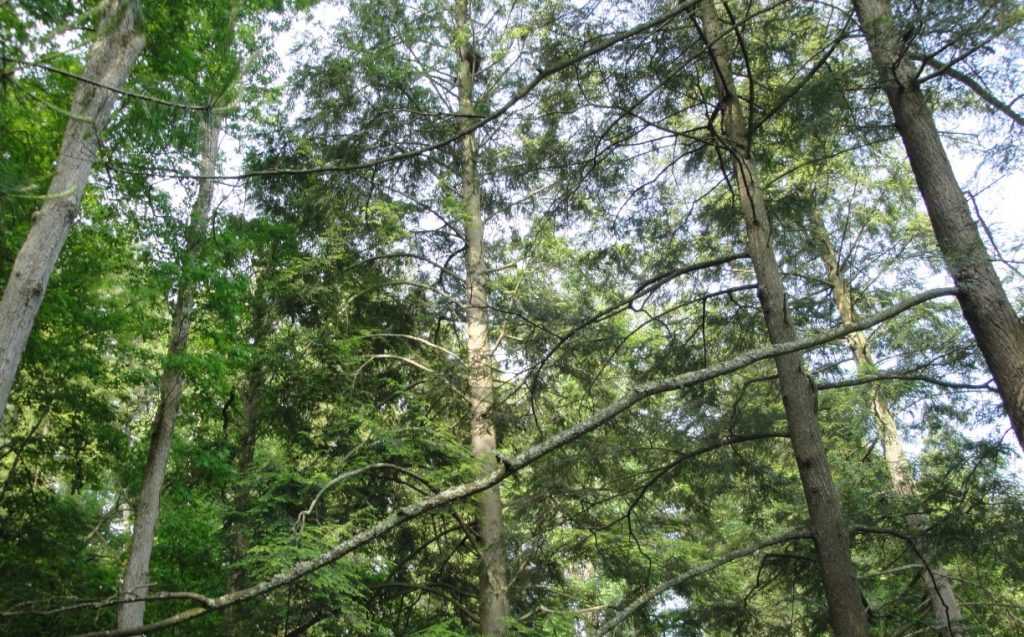
The Biltmore estate had lots of big and beautiful trees, including some hemlocks. Hemlocks are common much farther north. They hang on in the southern Appalachians as a relic of when the climate was much cooler thousands of years ago. Or maybe we should say they hung on and that they were common farther north.
The hemlocks on Biltmore don’t look good. It is not bad management or climate change that did this. This destruction is probably the work of the hemlock wooly adelgid, an invasive pest from Asia that arrived in 1924 and has now spread from Maine to the Carolinas. This is an ecosystem altering monster, although the insect itself is almost too small to notice. It threatens the existence of hemlocks in eastern North America. The hemlock is a beautiful tree that grows well in shade. It occupies this special shady niche and w/o the hemlock many of the woods will be a lot more open and hotter. The destruction of the hemlock is a slow motion disaster.
When I first visited Old Rag mountain in the Shenandoah, the start of the trail was shaded by giant hemlocks. That was twenty-five years ago. Today they are gone. All that is left are dead and decaying skeletons. Some of the guide books still describe the cool shade and the deep green solitude of the place, but if you won’t find it no matter how hard you look. Hemlocks make a particular sound when the wind blows through.
We lost the chestnuts before I was born. Now the hemlocks are going. We did manage to bring back the American elm, however, so maybe there is still hope. A lot of good work is being done in biotech and plant breeding.
